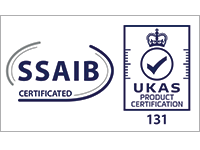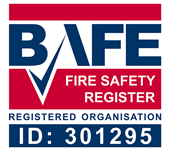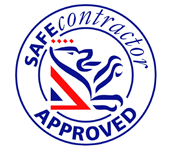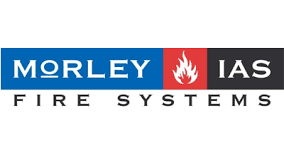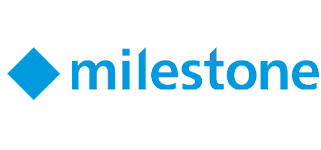How to choose the correct fire extinguisher
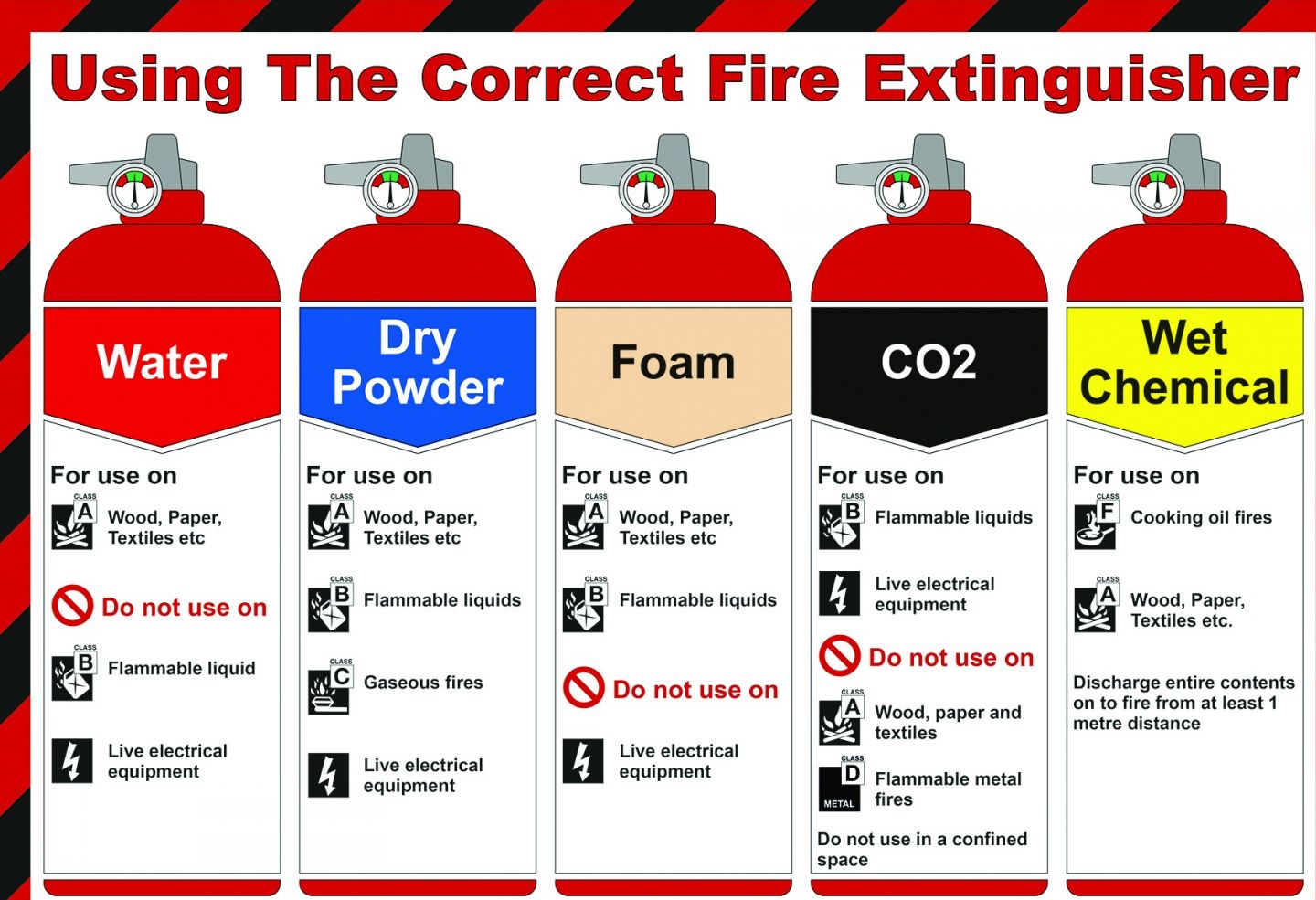
28th Jun 2019
Fire Classification
All fires are grouped into classes, according to the type of materials that are burning.
Class A: Fires are those involving free burning materials, such as paper wood, fabrics and other textiles, and also plastics
Class B: Fires involve flammable liquids and solids, such as diesel, petrol and oils (but not cooking oils), plus solid fuels such as wax
Class C: Fires involve flammable gases, such as propane, butane and methane
Class D: Fires involve flammable metals such as sodium, potassium and magnesium
Class E: Electrical equipment fires involve electrical equipment such as switchgear or computers. (These are sometimes referred to as Class E fires, although the category does not officially exist in the UK*)
Class F: Fires are specific to cooking oils and fats
Note: Note: Unlike other continents, the European EN3 rating system does not recognise a Class E fire classification, as electrical equipment is often the cause of a fire, rather than a fire type. So, modern fire extinguishers specify whether they should be used on electrical equipment, rather than bearing a Class E rating.
Extinguisher Types
Carbon Dioxide (CO2) Fire Extinguishers: Suitable for fires involving flammable liquids or electrical apparatus.
Foam (AFFF) Fire Extinguishers: Suitable for most fires involving flammable liquids, apart from cooking oil fires.
Dry Powder Fire Extinguishers: Suitable for most fires involving flammable liquids or electrical apparatus.
Water Fire Extinguishers: Suitable for most fires except those involving flammable liquids or live electrical apparatus.
Extinguisher Details
CO2 Carbon Dioxide
Description: Carbon dioxide fire extinguishers are coloured bright red with a black panel above the operating instructions. They have a distinctive horn-shaped nozzle at the side with the 5kgs and above units having a hose and horn. The extinguisher sounds a loud sound when started.
Best Use: The only fire extinguisher recommended for fires involving electrical equipment. They are also effective on Class B fires (flammable liquids).
Notice: Do not use on domestic chip or fat pan fires. Fumes from CO2 extinguishers can be harmful if used in confined spaces: ventilate the area as soon as the fire has been controlled. Do not hold the horn whilst in use as it becomes very cold.
Operation: The discharge horn should be directed at the base of the flames and the jet kept moving across the area of the fire. The extinguisher works on classes B and C and works by suffocating the fire.
How it works: CO2 is a clean gaseous agent which displaces oxygen suffocating the fire as it cools.
Multipurpose Dry Powder
Description: Powder fire extinguishers are red with a blue panel, are either ABC or BC rated.
Best Use: Dry powder fire extinguishers are safe to be used on fires involving electrical equipment (remember to look for the electrical safety pictogram.) and are excellent all-round fire extinguishers and for use on organic solids, liquids such as grease, fats, oil, paint, petrol etc.
Notice: Not on domestic chip or fat pan fires and never mix dry powder types. Dry powder extinguishers are not suitable for use in enclosed spaces such as offices, hotels, schools, etc, as the fire-fighting agent creates a cloud that can obscure vision. The contents may also create breathing problems.
Operation: Point the jet or discharge horn at the base of the flames and, with a rapid sweeping motion, drive the fire towards the far edge until all the flames are out. If the extinguisher has a shut-off control wait until the air clears and if you can still see the flames, attack the fire again.
How it works: Powder based fire extinguishers separate the four parts of the “fire tetrahedron”. This prevents the chemical reaction between heat, fuel and oxygen and halts the production of fire sustaining “free-radicals”, thus extinguishing the fire.
Specialist Dry Powder
Description: Powder fire extinguishers are red with a blue panel, are either ABC or BC rated
Best Use: Dry powder fire extinguishers are safe to be used on fires involving electrical equipment (remember to look for the electrical safety pictogram.) and are excellent all-round fire extinguishers and for use on organic solids, liquids such as grease, fats, oil, paint, petrol etc.
Notice: Not on domestic chip or fat pan fires and never mix dry powder types. Dry powder extinguishers are not suitable for use in enclosed spaces such as offices, hotels, schools, etc, as the fire-fighting agent creates a cloud that can obscure vision. The contents may also create breathing problems.
Operation: Point the jet or discharge horn at the base of the flames and, with a rapid sweeping motion, drive the fire towards the far edge until all the flames are out. If the extinguisher has a shut-off control wait until the air clears and if you can still see the flames, attack the fire again.
How it works: Powder based fire extinguishers separate the four parts of the “fire tetrahedron”. This prevents the chemical reaction between heat, fuel and oxygen and halts the production of fire sustaining “free-radicals”, thus extinguishing the fire.
Foam – AFFF (Aqueous Film-Forming Foam)
Description: Foam extinguishers are red with a cream panel above the operating instructions.
Best Use: Fires involving solids. Liquids such as grease, fats, oil, paint, petrol, etc .Can be used on class A fires but not recommended.
Notice: Do not use on domestic chip or fat pan fires.
Operation: Fires involving solids aim the jet at the bottom of the flames and keep it moving across the area of the fire. Ensure that all areas of the fire are out. For fire involving liquids, do not aim the jet straight into the liquid. Where the liquid on fire is in a container, point the jet at the inside edge of the container or on a nearby surface above the burning liquid. Allow the foam to build up and flow across the liquid.
How it works: This extinguisher type, which is generally applied to fuel fires, forms a frothy blanket or seal over the fire, thereby starving the fire of oxygen and cooling the fire through the evaporation of the water content in the foam. Unlike powder, foam can be used to progressively extinguish fires without flashback.
Foam
Description: Foam extinguishers are red with a cream panel above the operating instructions
Best Use: Fires involving solid and liquids such as grease, fats, oil, paint, petrol, etc. Can be used on Class A fires but not recommended.
Notice: Do not use on domestic chip or fat pan fires. Check manufacturer’s instructions for suitability of use on other fires involving liquids.
Operation: For fire involving liquids, do not aim the jet straight into the liquid. Where the liquid on fire is in a container, point the jet at the inside edge of the container or on a nearby surface above the burning liquid. Allow the foam to build up and flow across the liquid.
How it works: This extinguisher type, which is generally applied to fuel fires, forms a frothy blanket or seal over the fire, thereby starving the fire of oxygen and cooling the fire through the evaporation of the water content in the foam. Unlike powder, foam can be used to progressively extinguish fires without flashback.
Water
Description: Red container
Best Use: Fires involving organic solid materials such as wood, cloth, paper, plastics, etc.
Notice: Do not use on burning fat or oil or on electrical appliances.
Operation: Aim the jet at the bottom of the flames and keep it moving across the area of the fire. Ensure that all areas of the fire are extinguished.
How it works: Water stored pressure extinguishers cool burning material by absorbing heat from the burning material.
Water Spray
Description: Red container like for like, it provides up to 300% more fire fighting capability than traditional jet type water fire extinguishers.
Best Use: Fires involving organic solid materials such as wood, cloth, paper, plastics, etc.
Notice: Do not use on burning fat or oil or on electrical appliances.
Operation: Aim the jet at the bottom of the flames and keep it moving across the area of the fire. Ensure that all areas of the fire are extinguished.
How it works: Water has a great effect on cooling the fuel surfaces and thereby reducing the pyrolysis rate of the fuel. Instead of a jet nozzle a spray nozzle is used, with a higher pressure, which creates a fine spray. This allows for a given quantity of water to have a vast increase in the surface area presented to the fire. This makes extinguishing more efficient by more rapid removal of heat, formation of steam etc. They can also contain surfactants which help the water penetrate deep into the burning material which increase the effectiveness of the extinguisher.
Wet Chemical
Description: Red with a yellow panel above the operating instructions.
Best for: The specialist wet chemical extinguishers are ideal for Class F fires, involving cooking oils and fats, such as lard, olive oil, sunflower oil, maize oil and butter.
Notice: Check manufacturer’s instructions for suitability of use. These extinguishers are not recommended for class B fires and home use.
Operation: Apply the wet chemical using the extended applicator in slow circular movements, which give a gentle, yet highly effective application. Apply the fine spray onto the burning fat until the surface of the burning cooking oil changes into a soapy like substance, this then prevents re-ignition. The gentle application helps prevent hot oil splashing onto the user.
How it works: Most class F extinguishers contain a solution of potassium acetate, sometimes with some potassium citrate or potassium bicarbonate. Wet chemical fire extinguishers put out a fire by forming a soapy foam blanket over burning oil (saponification) and by cooling the oil below its ignition temperature. Generally used for class A and class F fires, this type of extinguisher is ideal for commercial kitchen cooking fat fires. This extinguisher type is not suitable for electrical fires.

